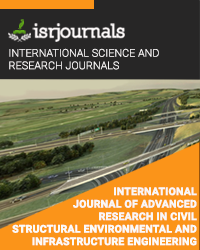air pollution control using split stream cyclonic dust collector
Asir,Birudala Praveen.P
Published in International Journal of Advanced Research in Civil,Structural,Environmental and Infrastructure Engineering and Developing
ISSN: 2320-723X Impact Factor:1.7 Volume:3 Issue:1 Year: 03 March,2017 Pages:352-356

Abstract
A dust collector is a system used to enhance the quality of air released from industrial and commercial processes by collecting dust and other impurities from air or gas. Designed to handle high-volume dust loads, a dust collector system consists of a blower, dust filter, a filter-cleaning system, and a dust receptacle or dust removal system. It is distinguished from air cleaners, which use disposable filters to remove dust.Dust collectors are used in many processes to either recover valuable granular solid or powder from process streams, or to remove granular solid pollutants from exhaust gases prior to venting to the atmosphere. Dust collection is an online process for collecting any process-generated dust from the source point on a continuous basis. Dust collectors may be of single unit construction, or a collection of devices used to separate particulate matter from the process air. They are often used as an air pollution control device to maintain or improve air quality.Proper maintenance of your dust collector is important in extending filter life and ensuring the collector consumes as little energy as possible. Dust collector owners and operators sometimes assume they re being frugal by replacing a single damaged filter rather than all the filters. While this simpler and quicker fix may seem like an economical choice, it may actually result in more frequent filter replacements, more downtime, and higher electric bills – meaning increased cost.In the traditional method the filter based dust collector facing these issue in there process. So the Split Stream is a mechanical "counter-cyclonic" dust collector. Unlike conventional cyclone dust collectors, the Split Stream utilizes a powerful secondary air stream which protects the inner walls from abrasive wear and directs incoming dust toward the collection hopper. This unique design yields higher collection efficiency than a traditional cyclone dust collector and allows the unit to be installed in a horizontal or vertical configuration without reducing efficiency. Because the Split Stream Dust Collector uses no filter bags or cartridges, it can easily handle high dust loads with minimal maintenance requirements. An added benefit for this customers process was the ability to use ambient air for the secondary air stream.
Kewords
air quality, Split Stream, cartridges, hopper.
Reference
1. Lackner K.S., Grimes P. and Ziock H.J., Capturing Carbon Dioxide from Air, Colombia University (2007) 2. Somy A., Mehmia M.R., Amrei H.D., Ghanizadeh A. and Safari M., Adsorption of Carbon Dioxide using 3.MULDER M., The use of membrane processes in environmental H., Upgrading of landfill gas by membranes - process problems. An introduction, in: "Membrane Processes in Separation and Purification" (Crepso J.G., Boddeker K.W., Eds.), Kluwer Academic Publishers, Dordrecht-Bos ton-London, pp.229-262, 1994. 4. RAUTENBACH R., EHRESMAN design and cost evaluation,AIChE.Symp.Ser., 85 (272), 48, 1989.

